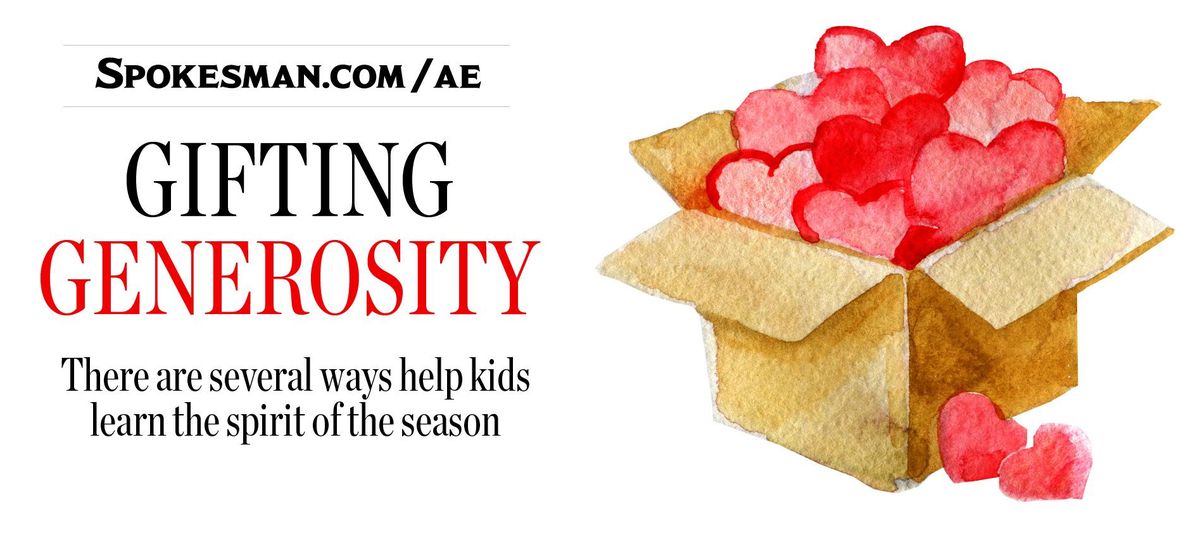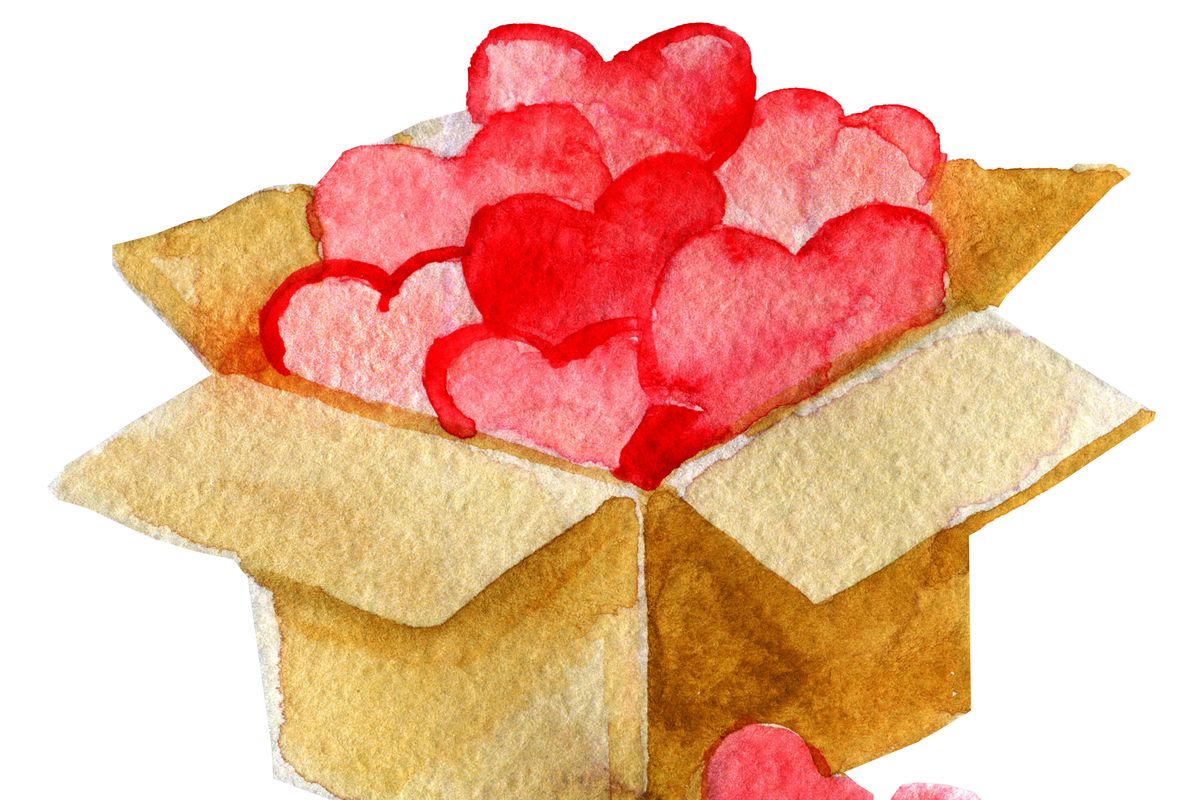Gifting generosity: Several tricks help kids learn the spirit of the season
Kids eagerly anticipate holiday gifts. Brightly wrapped packages get ripped open in minutes.
Parents often wonder how also to give lessons in generosity and thankfulness to their children – that Christmas spirit of giving.
Some people have kids help buy a gift for a family in need – perhaps a toy listed on a giving tree tag at churches or schools. Others ask kids to pack up their own unused toys to donate, like in the Spokane Valley home of David and Sheryl Demars. They have seven children ranging in age from 11 to 25.
“After Thanksgiving, everyone goes through their closets, games and things like their clothes, shoes and toys,” Sheryl Demars said. “They evaluate what they have not used through that past year.”
The family donates those gently used items to shelters and a favorite place, Teen & Kid Closet, where foster kids can shop for free.
“It helps our children realize how much they have,” she said. “It makes them much less inclined to ask for things.”
She and her husband involve their kids in many other generosity activities because, “We try to help our children understand that grateful people are happy people.”
To promote generosity, here five other ideas:
Be a good role model. Use manners on a daily basis in the home first and also as your kids watch your adult interactions. “Identify ways, both big and small, to give thanks,” said Deanna Trella, Eastern Washington University director of children’s studies.
“Ask children to identify why they are grateful. This helps them to identify the emotions associated with gratitude.”
Parents also can take kids with them to sing carols at retirement homes or have them help prepare food or baked items for people who could use a boost during the holidays.
Volunteer. Near Christmas, the Demarses join friends to prepare a meal at the Ronald McDonald House in Spokane for people staying at that facility because of hospitalized children. Sheryl Demars said all of her children have helped for many years prepping the food, cooking and serving it.
“The people staying there are so grateful because they’re not home with their own traditions,” she said. “We have kids coming home from college, and we’ll do it again when they are all here this Christmas.”
Trella said small children can start learning the value of helping others by doing small tasks at home for a parent or sibling.
Kids also can help in the neighborhood, “by helping a neighbor rake leaves or shovel snow,” she said. “Our children make Christmas cookies and cards for our neighbors. When there are builders in the neighborhood working outdoors in cold weather, they will make and distribute hot chocolate.”
Recalling moments of helping others comes up often when the Demars children gather.
“When we get together at the holidays, our children usually don’t talk about the gifts they have received over the years, but they talk about the opportunities we have had to go help people and how much fun that was,” Sheryl Demars said.
Change up giving. Programs such as Santa Express offer a way for kids to select gifts for relatives. In downtown Spokane’s River Park Square through Dec. 23, volunteers guide kids through an experience geared to teaching them about the gift of giving, and 100 percent of proceeds benefit the Vanessa Behan Crisis Nursery.
A handmade gift can be a treasure for years. The Demars family draws names, so that one sibling creates a handmade gift for another child in the family.
“We draw names about a month before Christmas, and they think very carefully about that person and then make something by hand. Those are always the best gifts. It teaches them to be generous, not necessarily with money, but with their thoughts and time.”
Three years ago, the eldest drew the name of the youngest, so they went out together sledding and playing in the snow. “Our eldest son took a GoPro video and pictures, then he came in and on his computer created a movie with music. It’s a 15-minute movie in slow motion, and it’s funny. We watch it every year at Christmas.”
Send thank you cards. Include notes of appreciation not only for presents, but for time spent with family and friends, encourages Trella. “This teaches children to be thankful, not simply for things they get from others, but for the people giving those gifts and relationships.”
Keep a gratitude journal. At the end of the year, spend time as a family going over a year’s worth of gratitude-moments big and small. You may also consider reading through the moments of gratitude when children are having a bad day or generally feeling negative. This exercise helps children focus their energy on identifying positive experiences and people in their world.

